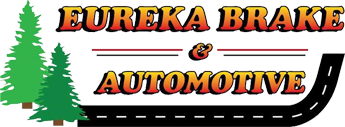You may have noticed your tires have a pretty long number on them. Yours might start with a letter, then a 3-digit number, followed by a few more numbers and letters. That string of letters and numbers is very important for your vehicle because it contains useful information on what tires will give you the performance to meet your vehicle’s original design specifications.
These numbers can be found in most owners' manuals and usually on the driver's side doorframe. Generally, it's a good idea to stick with the vehicle manufacturer's recommendations.
Example: The size code for the tire is P205/55R19 92 T M+S
Type
The letter P (for passenger car) at the beginning of the tire size code means that this tire is made for light-duty service, usually a car or smaller pickup truck. You may also see the letters LT (for light truck) before the tire size, which would mean the tire is designed for a bit heavier service on a pickup truck or SUV.
Width
Next in the tire size is 205, which is the section width measurement in millimeters from sidewall to sidewall.
Aspect ratio
The number after the slash is the aspect ratio. This refers to the profile height of the sidewall, or the height of the sidewall as a percentage of the tread width.
Construction
The letter following the profile height identifies the tire's construction. Most tires sold today are an R, which means they are of radial tire construction. Though not nearly as common, other construction codes you might see are D for diagonal and B for bias belted.
Wheel diameter
The final number in the size code is the diameter — in inches — of the wheel on which the tire will be mounted. This tire would be mounted on a 19" wheel.
Load index and speed rating
The last grouping of characters, tied to the tire type, size and construction, represents the load index and speed rating. Also known as the service description, the number indicates the maximum load the tire can support when inflated properly, and the letter represents the maximum speed capability of the tire. In our example, a load index of 92 means that the tire can support 1,389 pounds at maximum air pressure. Multiply that by four tires (4 x 1,389 = 5,556 pounds) to get your vehicle's maximum load-carrying capacity. The letter T speed rating indicates maximum speed capability of 118 mph. The M+S signifies that it is a mud and snow rated tire.
Although the size, construction and type will be the minimum information to arm yourself with when buying tires, a variety of other important details can be found in the other letters, numbers and symbols on the tire. In some cases, you can change tire and wheel sizes, but it's best to get expert help. Mismatching tires and wheels with a vehicle can cause performance and safety issues. It requires resetting some of the electronic systems to compensate for the new tire/wheel size.
Consult your Service Advisor when it's time to put a new set of tires on your vehicle. Hey, at least now you know what those funny numbers and letters mean!
Eureka Brake & Automotive <br/>707.443-2122 <br/>www.eurekabrake.com
Revised from content contributed by NAPA Service Assistant

